The Knitting Circle Read online
More praise for Ann Hood and The Knitting Circle
“One can only admire Hood for the effort she takes in this book to describe an insupportable grief…. Undeniably real. The lesson—that being willing to share our stories, we learn how to live—cannot be dismissed.”
—Julie Wittes Schlack, Boston Globe
“Though every sentence is steeped in heart-wrenching sadness, Hood conveys the positive power of knitting and its ability to rescue us in our darkest hours.”
—Cheryl Krementz, knitsimple Magazine
“[Hood’s] attention to craft and her experience as a novelist—and journalist—make for an intelligent, moving read in which knitting is the tie that binds these women together and helps them to heal…. Hood has done a most difficult thing, and she has done it successfully: She has taken her life and transformed it into art.”
—Barbara DeMarco-Barrett, Pages Magazine
“[Hood’s] portrait of Mary’s grief is so real and so raw. The unpredictable arc of it…gives Mary’s grief a three-dimensional humanity that a less familiar portraitist might have missed…. The prose of The Knitting Circle is clear, even as Mary’s perspective is clouded by heartbreak, and the pace of the story is just right.”
—Beth Schwartzapfel, Providence Journal
“Writer Ann Hood has written seven previous novels, and it shows in her strong writing and Mary’s precisely rendered mourning.”
—Yvonne Zipp, Christian Science Monitor
“The strength of the novel is in the painfully realistic portrayal of the stages of mourning, and though there’s a lot of knitting…the terminology’s simple enough for non-knitters to follow and doesn’t distract from the quick pace of the narrative.”
—Publishers Weekly
“Hood’s words…pull you along, like a knitting pattern, one mesmerizing, settling click at a time, stitch by stitch, row by row, until you find yourself with something solid and real.”
—Peggy McMullen, The Oregonian
“This book is rich in sensory detail…. This book shines a light on women helping each other and the world one stitch at a time.”
—Jan Marin Tramontano, Albany Times Union
“Ann Hood can really write, and the groundings of this book and the insights within it come sadly and powerfully from a place other than the writer’s imagination…. Each woman’s story is compelling in its own way. There’s none of the ‘and you thought you had it bad’ here. One woman’s grief doesn’t under-cut any other’s. They are all afforded their own due respect.”
—Rita Giordano, Philadelphia Inquirer
“It is a testament to Hood’s power as a writer that the reader is drawn in and touched by each character’s tale.”
—Dan Pope, Hartford Courant
“Beautiful language and convincing characters make it a worthwhile read…. Hood draws her characters sympathetically if unsparingly.”
—Library Journal
THE KNITTING CIRCLE
ALSO BY ANN HOOD
Somewhere Off the Coast of Maine
Waiting to Vanish
Three Legged Horse
Something Blue
Places to Stay the Night
The Properties of Water
Ruby
Do Not Go Gentle
An Ornithologist’s Guide to Life: Stories
THE KNITTING CIRCLE
Ann Hood
W. W. NORTON & COMPANY
NEW YORK • LONDON
For knitters
For friends
Copyright © 2007 by Ann Hood
All rights reserved
For information about permission to reproduce selections from this book, write to Permissions, W. W. Norton & Company, Inc., 500 Fifth Avenue, New York, NY 10110
Library of Congress Cataloging-in-Publication Data
Hood, Ann, 1956–
The knitting circle /Ann Hood.—1st ed.
p. cm.
ISBN: 978-0-393-06713-2
1. Female friendship—Fiction. 2. Knitting—Therapeutic use—Fiction. I. Title.
PS3558.0537K55 2007
813'.54—dc22 2006032223
W. W. Norton & Company, Inc.
500 Fifth Avenue, New York, N.Y. 10110
www.wwnorton.com
W. W. Norton & Company Ltd.
Castle House, 75/76 Wells Street, London W1T 3QT
CONTENTS
PROLOGUE
PART ONE CASTING ON
1 MARY
2 THE KNITTING CIRCLE
PART TWO K2, P2
3 SCARLET
4 THE KNITTING CIRCLE
PART THREE KNIT TWO TOGETHER (K2 to g)
5 LULU
6 THE KNITTING CIRCLE
PART FOUR SOCKS
7 ELLEN
8 THE KNITTING CIRCLE
PART FIVE A GOOD KNITTER
9 HARRIET
10 THE KNITTING CIRCLE
PART SIX SIT AND KNIT
11 ALICE
12 THE KNITTING CIRCLE
PART SEVEN MOTHERS AND CHILDREN
13 BETH
14 THE KNITTING CIRCLE
PART EIGHT KNITTING
15 ROGER
16 THE KNITTING CIRCLE
PART NINE COMMON SUFFERING
17 MAMIE
18 THE KNITTING CIRCLE
PART TEN CASTING OFF
19 MARY
20 THE KNITTING CIRCLE
ACKNOWLEDGMENTS
PROLOGUE
Daughter, I have a story to tell you. I have wanted to tell it to you for a very long time. But unlike Babar or Eloise or any of the other stories that you loved to hear, this one is not funny. This one is not clever. It is simply true. It is my story, yet I do not have the words to tell it. Instead, I pick up my needles and I knit. Every stitch is a letter. A row spells out “I love you.” I knit “I love you” into everything I make. Like a prayer, or a wish, I send it out to you, hoping you can hear me. Hoping, daughter, that the story I am knitting reaches you somehow. Hoping, that my love reaches you somehow.
Part One
CASTING ON
To knit, you have to have the stitches on one needle. “Casting on” is the term for making the foundation row of stitches. Once you have cast on, you are ready to knit.
—NANCY J. THOMAS AND ILANA RABINOWITZ,
A Passion for Knitting
1
MARY
MARY SHOWED UP empty-handed.
“I don’t have anything with me,” she said, and she opened her arms to indicate their emptiness.
The woman standing before her was called Big Alice, but there was nothing big about her. She stood five feet tall, with a tiny waist, short silver hair, and gray eyes the color of a sky right before a storm. Big Alice had her slight body wedged between the worn wooden door to the shop and Mary herself.
“This isn’t really my kind of thing,” Mary said apologetically.
The woman nodded. “I know,” she said, stepping back so that the door swung open wide. “I can’t tell you how many people have stood right where you’re standing and said that exact thing.” Her voice was soft, British.
“Well,” Mary said, because she didn’t know what else to say.
She never did know what to say these days, or what to do. This was in September, five months after her daughter Stella had died. That stunned disbelief had ebbed slightly, but the horrible noises in her head had grown. They were hospital noises, doctors’ voices, and Stella’s own five-year-old voice saying Mama. Sometimes Mary imagined she really heard her daughter calling out to her and her heart would squeeze tight on itself.
“Come on in,” Big Alice said.
Mary followed her into the shop. Alice wore a gray tweed skirt, a white oxford shirt, a go
ld cardigan, and pearls. Although the top half of her looked like a schoolmarm, she had crazy-colored striped socks on her feet and pink chenille bedroom slippers with red rhinestone cherries across the tops.
“I’ve got the gout,” Big Alice explained, lifting one slippered foot. Then she added, “I guess you know I’m Alice.”
“Yes,” Mary said.
Like everything else, Mary could easily have forgotten the woman’s name. She’d written it on one of the hundreds of Post-its scattered around the house like confetti after a party. But, like all of the phone numbers and dates and directions, the paper with Alice written on it was gone. Outside the store, however, a wooden sign read Big Alice’s Sit and Knit, and when Mary saw it she had remembered: Alice.
Mary stopped and got her bearings. These days this was always necessary, even in familiar places. In her own kitchen she would stop what she was doing and look around, take stock. Oh, she would say to herself, noting that the television was off instead of tuned to Sagwa, the Chinese Cat; the bowl Stella had made at Claytime with its carefully painted and placed polka dots was empty of the sliced cucumbers or mound of blueberries it used to hold; the cutout hearts with crayoned I love you’s and the construction-paper kite with its pink ribbon tail drooped. Oh, Mary would say, realizing all over again that this was how her kitchen—her life—looked now. Empty and sad.
The shop was small, with creaky wooden floors and baskets and shelves brimming over with yarn. It smelled like sweaters and cedar and Alice’s own citrus scent. There were three rooms: this small one, the room beyond with the cash register and a well-worn couch slipcovered in a pink and red floral pattern, and another larger room with more yarn and a few chairs.
The yarn was beautiful. Mary saw this immediately and touched some as she followed Alice into the next room, letting her fingertips linger a bit over the skeins.
“So,” Alice was saying, “we’ll start you on a scarf.” She held up a finished scarf. Cobalt blue with pale blue tassels. “You like this one?”
“I guess so,” Mary said.
“You don’t like it? You’re frowning.”
“I do. It’s fine. It’s just, I can’t make it. I’m not good with my hands. I flunked home ec. Really, I did.”
Alice turned toward the wall and pulled down some wooden knitting needles.
“A ten-year-old can make that scarf,” she said, a bit impatiently. She handed the needles to Mary.
They felt large and smooth and awkward in her hands. Mary watched as Alice went over to a shelf and grabbed several balls of yarn. The same cobalt blue, and aquamarine, and mauve.
“Which color do you like?” Alice said. She held them out to Mary like an offering.
“The blue, I guess,” Mary said, and the particular blue of Stella’s eyes presented itself in her mind. When she tried to blink it away, she felt tears slide out. She turned her head and wiped her eyes.
“Blue it is,” Alice said, more gently. She pointed to a chair tucked into a corner beneath balls of fat yarn. “Sit down and I’ll teach you how to knit.”
Mary laughed. “Such optimism,” she said.
“A woman came in here two weeks ago,” Alice said, dropping into an overstuffed chair and sticking her feet up on a small footstool with a needlepoint cover. “She’d never knit a thing, and she’s made three of these scarves. That’s how easy it is.”
Mary had driven forty miles to this store, even though there was a knitting shop less than a mile from her house. As she navigated the unfamiliar back roads, it had seemed foolish, coming so far, to knit of all things. But sitting here with this stranger who knew nothing about her, or about what had happened, with these unfamiliar needles in her sweaty hands, Mary knew somehow that it was the right thing to do.
“It’s just a series of slipknots,” Alice said. She held up a long tail of the yarn and demonstrated.
“I was kicked out of the Girl Scouts,” Mary said. “Slipknots are a mystery to me.”
“First home economics. Then the Girl Scouts,” Alice said, tsking. But her gray eyes gleamed mischievously.
“Actually, it was Girl Scouts, then home ec,” Mary said.
Alice chuckled. “If it makes you feel any better, I hated knitting. Didn’t want to learn. Now here I am. I own a knitting store. I teach people to knit.”
Mary smiled politely. Other people’s stories held little interest for her. She used to like to listen to tales of broken hearts and triumphs and the odd twists of life. But her own story had taken over the part of her that was once open to such things. And if she listened out of politeness or necessity—like now—the situation begged for her to talk, to share. She wanted no part in that. There were times when she wondered if she’d ever tell her story to anyone.
“So,” Mary said, “slipknots.”
“Since you’re a Girl Scouts–home economics flunkee,” Alice said, “I’ll cast on for you. Besides, if I stand here and teach you, I’ll be wasting both our time because you’re going to forget.”
Mary didn’t bother to ask what “cast on” meant. Like a magician practicing sleight of hand, Alice made a series of loops and twists, then held out one needle, the blue yarn snaking up it ominously.
“I cast on twenty-two stitches for you, and you’re ready to go.”
“Uh-huh,” Mary said.
Alice motioned for Mary to come sit beside her.
“In here,” Alice said, demonstrating. “Then wrap the yarn like this. And pull this needle through.”
Mary smiled as first one stitch, then another, appeared on the empty needle.
“Okay,” Alice said. “Go ahead.”
“Me?” Mary said.
“I already know how to do it,” Alice said, “don’t I?”
Mary took a breath and began.
2
THE KNITTING CIRCLE
HERE WAS WHAT Mary still found extraordinary: on the day before Stella died, nothing unusual happened. There were no signs, no premonitions, nothing but the simple daily routine of their life together—she and Dylan and Stella. Her neighbor when she’d lived in San Francisco, on a high hill in North Beach, had been an old Italian woman named Angelina. Angelina always wore a black shawl over her head, and thick-soled black shoes, and a black dress. “People should know you’re in mourning,” she’d told Mary. “When you wear black, they understand.”
Mary hadn’t pointed out to her that everyone wore black these days. She hadn’t rolled her eyes or smirked when Angelina told her that three days before her husband died—and here she’d made the sign of the cross, spitting into her palm at the end—a dog had howled, facing their apartment. “I knew death was coming,” she’d said. Also, two other men from the neighborhood had died in the past few months. “Death,” she’d explained, “comes in threes.” Angelina had a litany of signs, dreams of clear water, of teeth falling out of her mouth; a dead bird on her doorstep; goose bumps in still, warm air.
But Mary had none of this. No dreams or dead birds or howling dogs. What she had was a typical day. A good day. At five, Stella still drank a bottle of milk in the morning and one at bedtime, a secret they kept from her kindergarten friends. Dylan brought her, happily and sleepily sucking her bottle, into bed with them and they cuddled there, Mary and Dylan reading the newspaper and Stella watching Sesame Street.
They knew it was time to get up when Stella came to life. No longer sleepy, she would start to tickle Dylan. Mary wished she could remember what they’d had for breakfast that last morning together, what they talked about over Eggos or cinnamon toast. But so ordinary was that morning that she cannot recall such details.
She knows that Stella wore striped tights and polka-dot clogs and a jumper that was too long, also striped. But she knows this because after Stella died, when they came home from the hospital, these clothes still lay in a crumpled heap, right where Stella had dropped them when she got ready for bed. She knows this because for days she carried them around, pressing them to her nose for the last hints of Ste
lla’s little-girl scent.
Dylan had left that morning while they were still getting ready for school. He always left early, kissing them both on the top of their heads. Stella would yell, “Don’t go, Daddy!” and pout, making Mary a little jealous. It was true, she thought, that the parent who did the most caretaking, the driving around and cooking and bathing, didn’t get the adoration.
She felt guilty now, of course, that she had no doubt grown short with Stella for dawdling that morning. Stella was a dawdler, easily distracted by the sight of her forgotten rain boots or the sparkles on a picture she’d drawn and hung on the fridge. Even while Mary hurried her, Stella hummed and dawdled happily, grinning up at her mother as she rushed her into the car. “We’re going to be late,” Mary probably mumbled that morning, because they were usually late. And Stella probably said, “Uh-huh,” before she returned to her humming.
Mary stopped for coffee that morning, and visited with other mothers at the café, and shared funny stories about their amazing children; she went to work, wasting these last precious hours as a mother with reviews and research and other meaningless tasks; Dylan called her—he always did—to tell her when he’d be home that evening, to ask if Stella had anything special going on; then she raced to pick up her daughter at school, sat in the car, and watched her come out, dreamy and tired, her backpack dragging on the ground. And as she watched her, Mary’s heart soared; it always did when she saw Stella, her daughter, again.
Unlike the rest of that day, the clarity of their last evening together was so strong that it made Mary double over to remember it. All of it. The late afternoon sun in their kitchen. Stella working on her Weekly Reader. Lighting the grill for an early barbecue. Stella drizzling the olive oil on the chicken. Stella scrubbing the dusty outdoor table and chairs, placing the napkins so carefully beside each plate, running into Dylan’s arms when he walked into the backyard, grinning, pleased, and said: “A barbecue! In April!” “Yes,” Stella had said, “we’re eating outside!”

 Kitchen Yarns
Kitchen Yarns Waiting to Vanish
Waiting to Vanish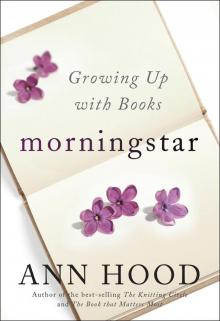 Morningstar
Morningstar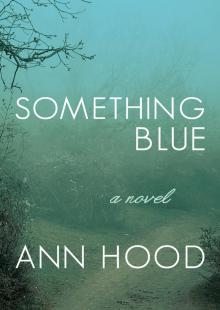 Something Blue
Something Blue Providence Noir
Providence Noir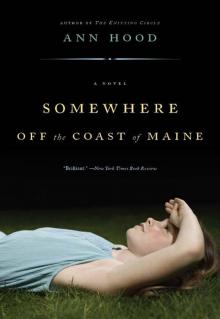 Somewhere Off the Coast of Maine
Somewhere Off the Coast of Maine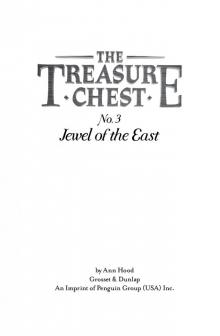 Jewel of the East
Jewel of the East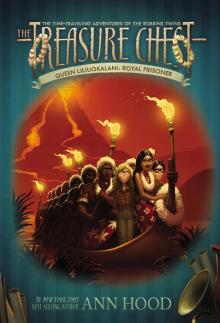 Queen Liliuokalani: Royal Prisoner
Queen Liliuokalani: Royal Prisoner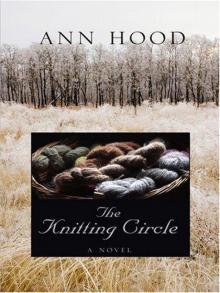 The Knitting Circle
The Knitting Circle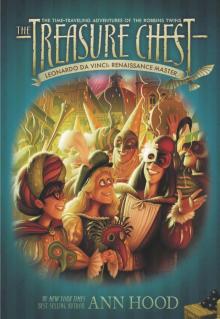 Leonardo da Vinci: Renaissance Master
Leonardo da Vinci: Renaissance Master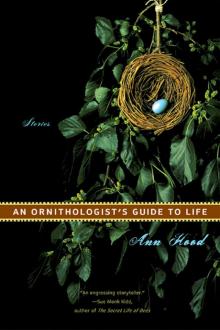 An Ornithologist's Guide to Life
An Ornithologist's Guide to Life The Red Thread
The Red Thread She Loves You (Yeah, Yeah, Yeah)
She Loves You (Yeah, Yeah, Yeah)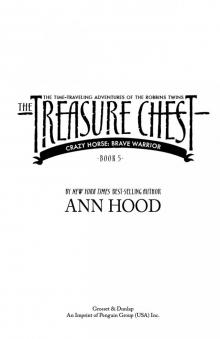 Brave Warrior
Brave Warrior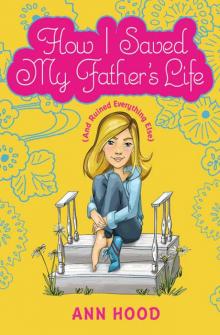 How I Saved My Father's Life (and Ruined Everything Else)
How I Saved My Father's Life (and Ruined Everything Else) An Italian Wife
An Italian Wife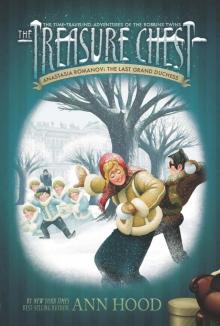 Anastasia Romanov: The Last Grand Duchess #10
Anastasia Romanov: The Last Grand Duchess #10 Prince of Air
Prince of Air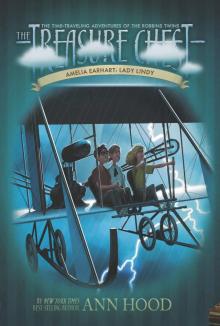 Amelia Earhart: Lady Lindy
Amelia Earhart: Lady Lindy Places to Stay the Night
Places to Stay the Night Little Lion
Little Lion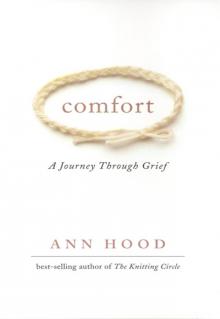 Comfort
Comfort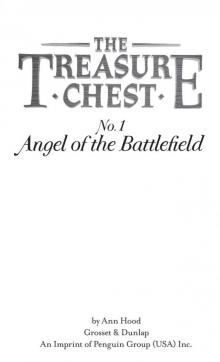 Angel of the Battlefield
Angel of the Battlefield